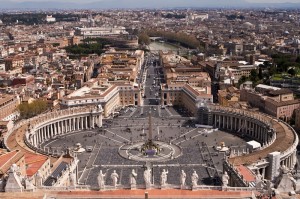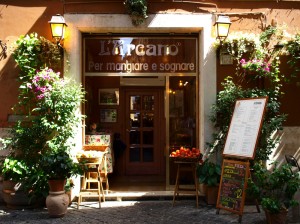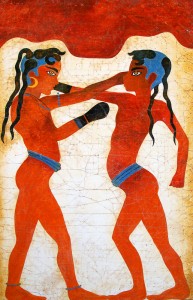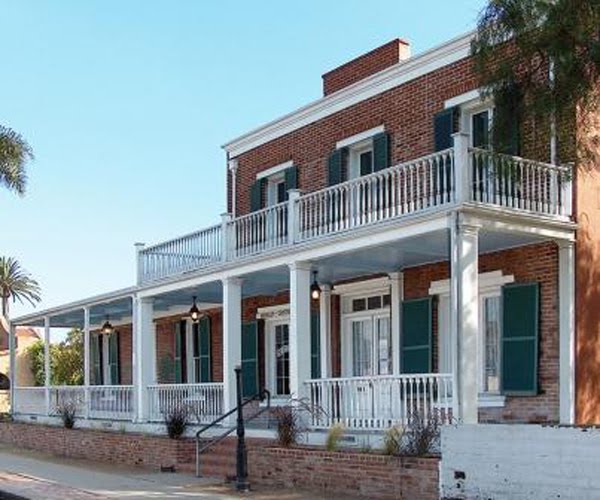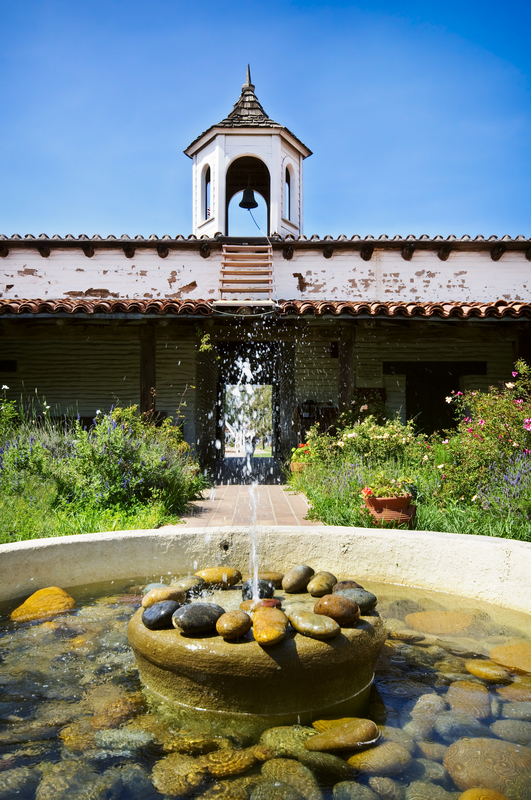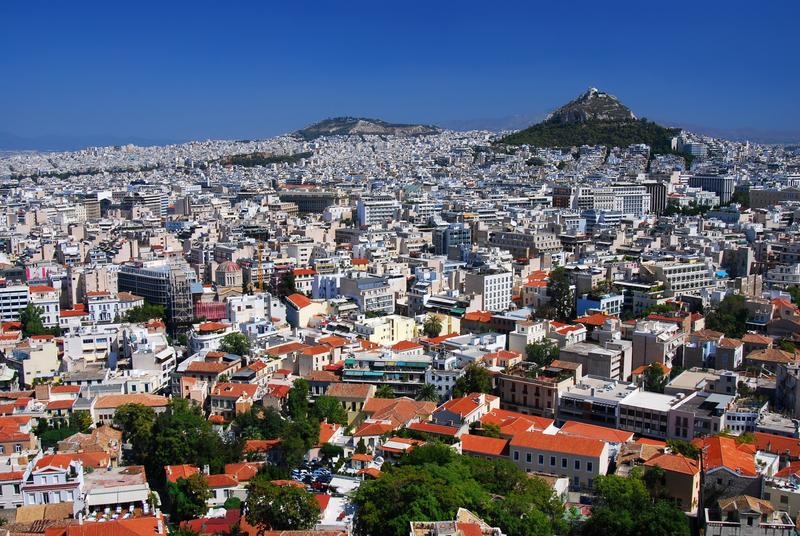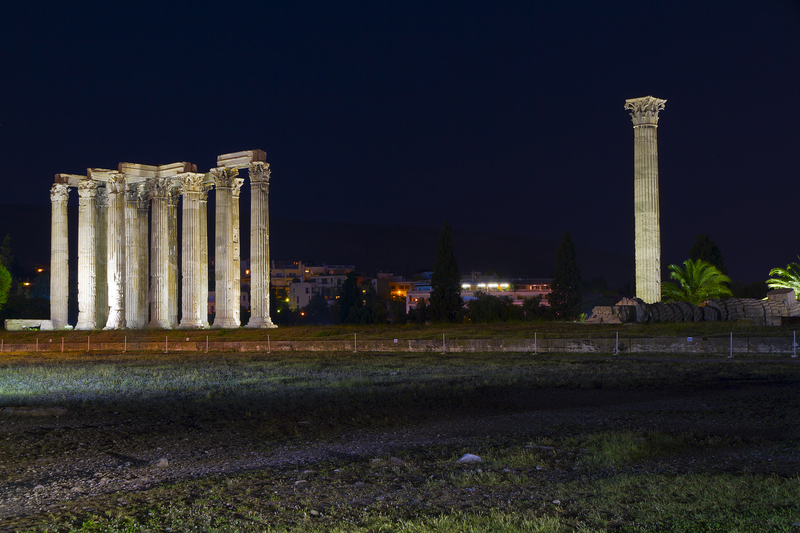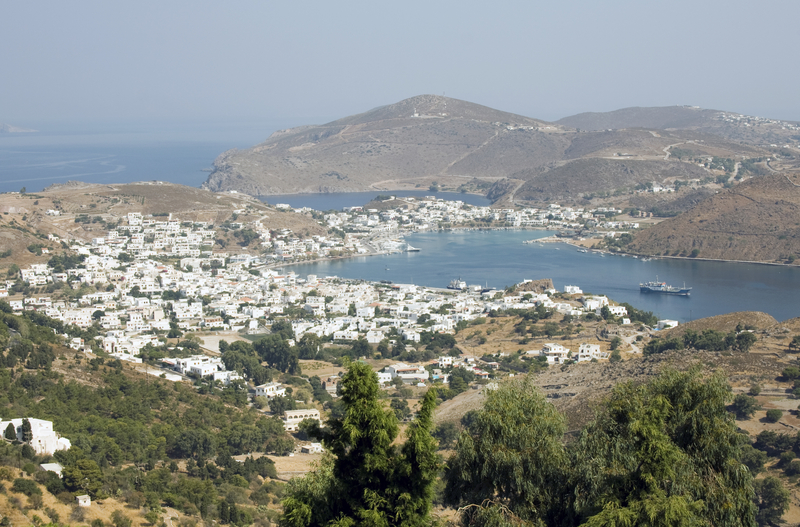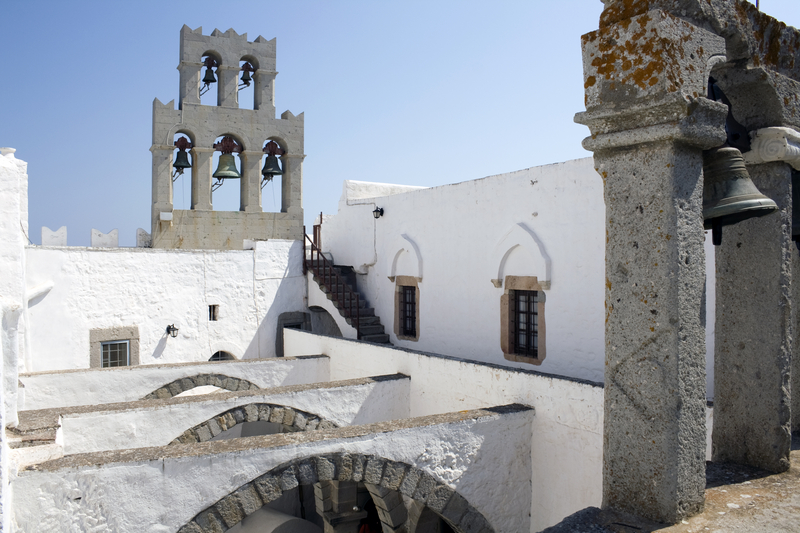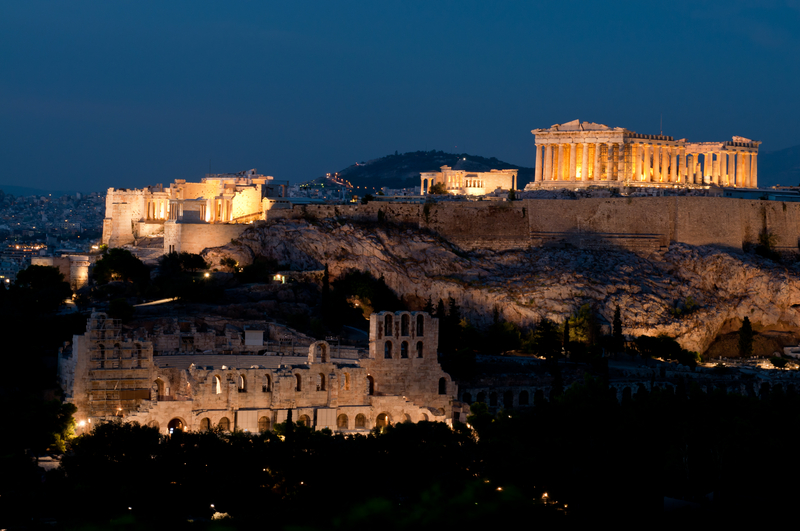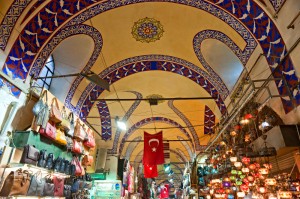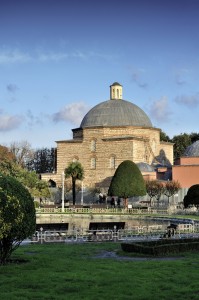Guest Post by: Bridget Staroscik O’Reilly
The Sistine Chapel is first and foremost a church. That’s very easy to forget when it’s packed wall to wall with people, or I suppose I should say tourists. Many churches are full of people and still look like a church. The people in the Sistine Chapel are in various modes of dress, mostly modest enough, in deference to the Vatican’s mores. The voices around speak every language imaginable, slowly they rise in pitch until the Corpo della Gendarmeria dello Stato della Città del Vaticano, demand quiet. This is a church after all.
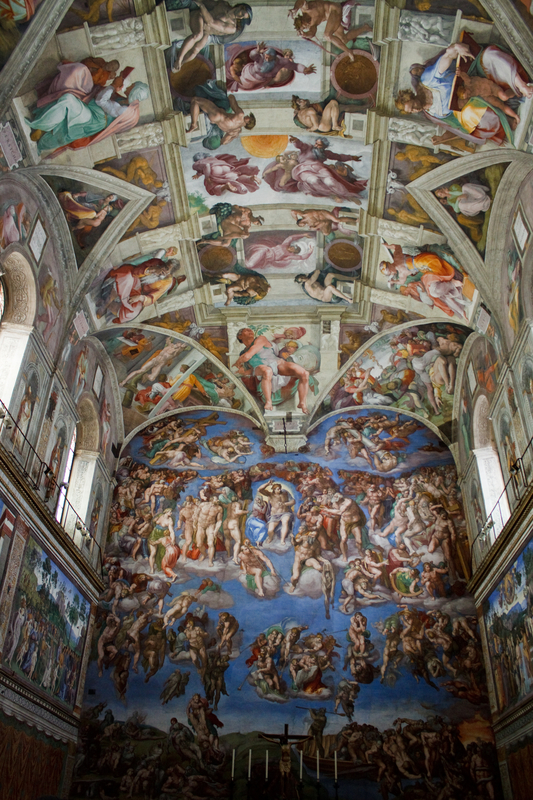 I understand how that can be hard to believe, pressed in as you are among the masses of humanity. The crowd can also make it hard to appreciate the beauty of the frescos that line the ceiling. As I crane my head to review the painting of God giving life to Adam, for a fleeting moment I wondered what it would be like to be alone in here. Then I looked at The Last Judgment and thought maybe the company wasn’t a bad thing.
I understand how that can be hard to believe, pressed in as you are among the masses of humanity. The crowd can also make it hard to appreciate the beauty of the frescos that line the ceiling. As I crane my head to review the painting of God giving life to Adam, for a fleeting moment I wondered what it would be like to be alone in here. Then I looked at The Last Judgment and thought maybe the company wasn’t a bad thing.
Placed directly above where the altar stands when the chapel is in church mode, is the above mentioned The Last Judgment, one of the most powerful pieces of art in the world. As the name suggests, the fresco depicts God’s final judgment on mankind. The face of Mary turned away in resignation at her inability to help the sinners at this point is perhaps one of the scariest aspects of the work since in the Catholic religion it is common to ask Mary, as Jesus’ mother, to intercede on our behalf. Mary’s expression in the piece shows that at that point, the dammed are beyond even her compassion.
That said; I’m a strong believer in the fact that you can literally learn the joy out of something. I think The Last Judgment is a great example of this. If you want to read all about it after you see it, go right ahead, but first see it. Too much knowledge is a dangerous thing and if you’re trying to pick out bits and pieces you read about, you run the risk of missing the whole. And in this case, the whole is pretty powerful. It may also explain why the safest way to cross a street in Rome is next to a nun or a priest. After all, once you’ve viewed the scene of souls being cast into hell, you realize quite quickly that it is not something you want to take part in.
All that aside, if you want to learn more about the Last Judgment after viewing it, they sell postcard and notepaper size reproductions along with books explaining the ins and outs of the piece. These include things like what saint each picture portrays; which of the dammed was actually supposed to be Michelangelo himself, and which depiction was a not at all private shot at one of Michelangelo’s critics of the time. They also sell large posters of The Last Judgment in the many gift shops that are scattered throughout the Vatican museums and the city itself. One of the people I met had bought a large poster of it and was so excited to have it. Said he was going to hang it on his wall. I don’t know about you, but I’m paranoid enough. I don’t need a constant reminder of what the consequences would be if I screw up.
For more info on the Sistine Chapel and the Vatican museum you can visit the Vatican’s office website at www.vatican.va/.
Guest Post by: Bridget Staroscik O’Reilly
